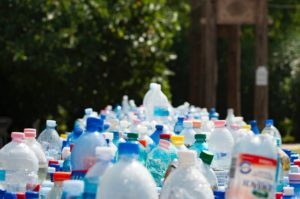2022 Recycling Guide
What do you do with disposable items at home or the workplace? You probably put them in the trash can. In a world where you have to dispose of anything that you no longer need/use, the pile of garbage can increase pretty quickly. Chances are you generate 4.6 pounds of garbage every day, according to statistics. And this translates to 1,788.5 pounds of trash per year, needing proper and eco-friendly waste management. Recycling is one of the accurate and dependable ways to reduce landfilling, yet it is way below— at 32% . Boosting this meager recycling rate up starts with you and me. In this 2022 recycling guide, you can learn to get recycling on the right foot.
Recycling is valuable to the environment and the economy.
Recycling in this era offers more than environmental benefits. This waste management strategy creates hundred of thousands of jobs each year and generates billions of dollars in revenue.
That one trash that you put in the recycling bin carefully goes a long way in creating a well-paying job for someone else.
Another benefit is that it cuts the number of trash piles in the landfill and ultimately saves the planet from toxic gases and chemicals.
The critical part of it all is that recycling helps in keeping the natural resources intact for future generations.
What can we recycle at home?
Recycling starts with your home and, more specifically, in your kitchen. You’ll be shocked at how many disposable items you can recycle in your kitchen.
Did you know that you can recycle foodstuff?
Food scraps can create excellent compost for your garden.
You can also recycle plastic containers, glass jars, cookware, metal cans, cardboard, food boxes, aluminum products, newspapers, junk mail, plastic grocery bags, and wood.
Appliances, electronics, tools, and furniture can be recyclable, too. Look for e-waste recyclers within your area for your e-waste.
Recycling tips for home disposables.
Rejected recyclables can be pretty demotivating, and there are many reasons your recyclable waste might not reach the recycling plant.
Recyclable contamination is one of the reasons for unsuccessful recycling. And in this case, it involves mixing recyclable and non-recyclables in the recycling bin.
Rinse your bottles, cans, jars, and containers before tossing them in the bin. Also, separate plastic grocery bags from your recyclables and don’t bag the recyclable material.
What can we recycle at the office?
You can recycle the typical plastic containers, glass, metals, and papers in your office. Additionally, collect electronics and send them to an e-waste recycler.
Furthermore, you can recycle food waste in the office. Install a bin for food waste like tea bags, coffees grinds, paper towels, food scraps, and compostable cutlery.

Recycling tips for recyclable office supplies.
Install office recycling bins. Need we say more? Accessible office recycling bins make it easy for staff members to put recyclables in a suitable container.
Create an upcycling system and promote reusing most of the office supplies. Also, you can focus on going paperless to limit the amount of shredded paper in your office.
Remember, papers are recyclable but not shredded paper.
What can we recycle at a construction/demolition site?
If you work or manage a building site, there are many things to recycle at a construction site.
You can recycle construction waste and generate new valuable products from concrete, bricks, metals, plastics, and wood to corrugated cardboard.
For instance, recycle debris to aggregate asphalt, mulch, and engineered wood products.
2022 recycling guide for recyclable construction/demolition waste
One recycling tip for C&D garbage is to steer clear of debris coated with laminates and adhesives.
Also, repurpose tree stumps, clippings, and leaves for landscaping.
Flatten your recyclable corrugated cardboard before recycling.
Importantly, get a trash dumpster from Bin There Dump That Tampa Bay, and it could save you money and headaches.
- Revive Your Home for Spring with This Spring Home Maintenance Checklist
- 10 New Home Trends That Will Make Your Friends Jealous
- How Our Dumpsters Support Realtors and Property Managers: A Comprehensive Guide
- 12 Jaw-Dropping Clutter Statistics That Will Make You Want to Declutter Today!
- Unlocking Space: The Complete Guide on Pocket Door Installation
- Step by Step Guide on How to Install Carpet Like a Pro